Kneading is one of the main massage techniques used in almost every type of massage. The kneading technique is more complex than other techniques.
Content:
- Effect on the body
- Execution technique
- Types of techniques
- General guidelines
The essence of the technique is to continuously grab tissues, squeeze them, roll them, rub them, and squeeze them.
Pays special attention to this technique. Because 60-70% of the time occupied by the entire massage scheme is devoted to kneading. It is no coincidence that they say that massaging means kneading.
Reception is divided into 2 types:
- intermittent;
- continuous.
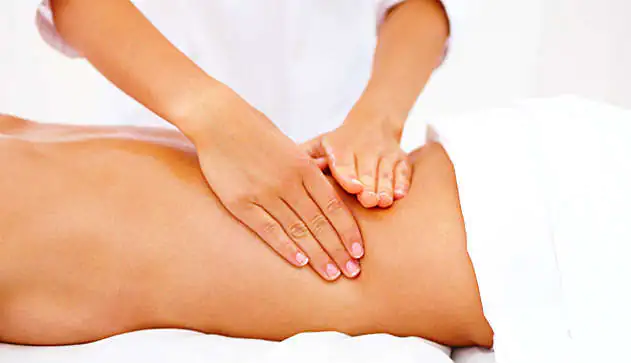
Massage therapist kneading back muscles
Effect on the body
The main effect is on human muscles. By influencing the muscles, there is an increase in the elasticity of the ligamentous apparatus, and the contractile function of the muscles improves. Blood and lymph circulation of the massaged surface also improves, which leads to improved metabolism, improved muscle performance, elasticity, and more effective tissue nutrition.
During the procedure, the massage therapist changes the pace and intensity of the treatment. This affects the increase or decrease in nervous excitability, as well as muscle tone. It is worth noting that the professionalism of a massage therapist should be judged by how he performs kneading..
to contents ↑In some ways, kneading techniques can be called light exercises for the muscles.
Execution technique
The technique of execution includes several techniques and their varieties. Let's look at each in more detail.
Ordinary
This massage technique is performed with one hand. It is performed as follows: the palm should tightly clasp the muscle being massaged. The fingers are arranged as follows: the thumb on one side, the rest on the other. The fingers slightly lift the fabric, making squeezing, forward movements.
This technique is performed at a slow, soft, smooth pace. The patient should not feel pain. Performed on the muscles of the limbs and back.

Ordinary
Double ring
Performed with both hands, moving in a transverse direction. It is carried out as follows: the desired muscle is tightly grasped with both hands, the fingers are positioned like this: the thumb on one side, the rest on the other.
One hand acts as a puller on the muscle, slightly squeezing and pressing it upward, the second hand pushes the muscle downward, moving along its course. The movement is smooth, soft, continuous. Typically performed as a massage of the back, buttocks, and abdomen.

Double ring
Double annular in longitudinal direction
Performed with both hands, moving in a longitudinal direction. It is performed as follows: both hands tightly clasp the necessary muscles, for example, the thigh muscles, with the fingers positioned as follows: the thumbs on top, the rest on the bottom. The thumbs squeeze the muscle, pressing on it, the rest push it from below. The technique is performed at a smooth, gentle pace, without pain.

Double annular in longitudinal direction
Intermittent
This technique can be performed with one or two hands. Movement - longitudinal or transverse. In this case, the movements are intermittent, spasmodic, uneven.
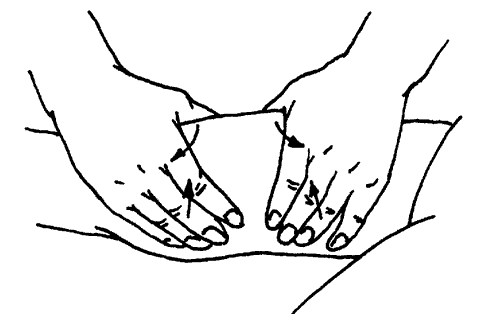
Intermittent
to contents ↑Types of techniques
Kneading is distinguished by its variety of forms and movements. And this is quite justified, because it is included in the section of basic massage techniques.
Pincer-shaped
This type of technique is performed with one or two hands, the fingers are arranged as follows: the thumbs on one side, the rest on the other. Grasp the muscle with your fingers, lift it slightly and begin to stretch between your fingers.
The technique is intended for the long muscles of the back, forearm, and tibial muscles of the leg.
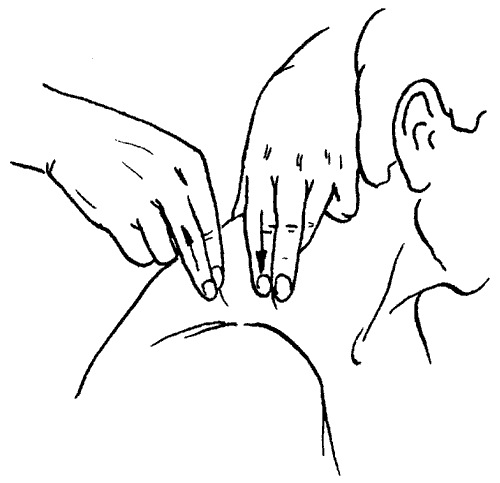
Pincer-shaped on the forearm
Wallow
This technique is a fairly gentle, gentle kneading. Mainly used for the muscles of the thighs and shoulders. This is done as follows: the palms are parallel to each other, one hand on one side of the muscle, the second on the other. Next, the palms smoothly compress and begin to “grind” the muscles.
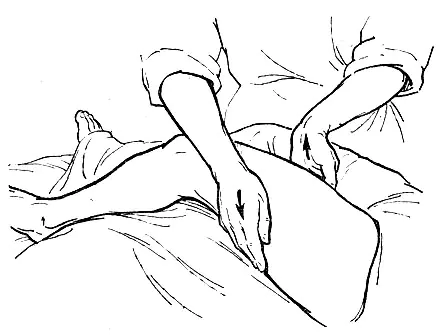
Felting thigh muscles
shift
The shift is performed with both hands at the same time. To do this, the thumbs are placed on one side of the muscle, the remaining fingers on the other. A kind of fold is formed from the tissues, slightly lifting which they begin to move to the side. Mainly used for the muscles of the back and feet.
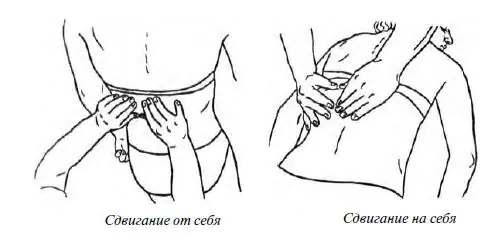
Tingling
This technique can be performed with one or two hands. Pinching is performed either with the thumb and forefinger, or with the thumb and all the others. As a rule, it is combined with stroking. The muscle tissue is grabbed and pulled upward.
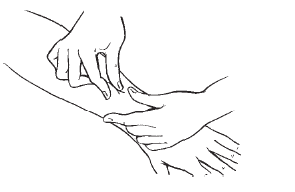
Pressure
Intermittent massage technique. Performed with the index finger or thumb. In some cases, pressure is applied with a fist, with weights. Pressure is applied at the exit points of the nerves (back muscles, face, with aging skin).
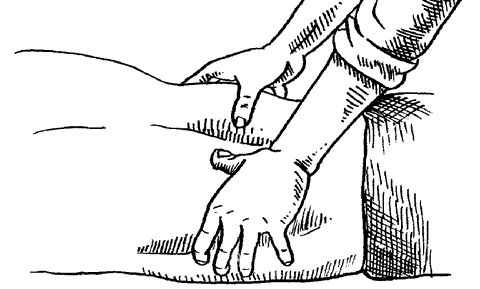
Pressure
Kneading with the base palms
This massage technique is performed using the base of the palm, the base is pressed tightly against the skin. With slight pressure it is performed in different directions. The treatment is performed on the muscles of the back, buttocks, and large joints.
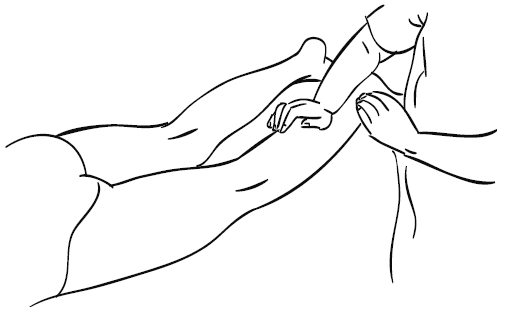
The base of the palm is on the calf muscle
Kneading with thumbs
Performed with the thumbs of both hands. The thumbs are placed on the muscle and pressed along the muscle line. Circular rotational movements begin to be performed. Reception is carried out on two lines.
Performed by pressing the thumbs
to contents ↑General guidelines
To achieve the maximum effect from this massage technique, you need to take into account several guidelines:
- It is desirable that during the massage the muscles are as relaxed as possible;
- all movements must be performed at a slow, measured pace;
- gradually the force of influence must be increased;
- you must try to perform deep, but absolutely painless movements;
- In massage, sharp jerks and twisting of muscles are unacceptable;
- When kneading, you need to take into account the degree of the pathological process.
Most common mistakesthat occur when performing a technique:
- tense hands of the massage therapist;
- painful techniques;
- “tearing” of muscles in different directions;
- strong pressure;
- muscle loss during massage.



